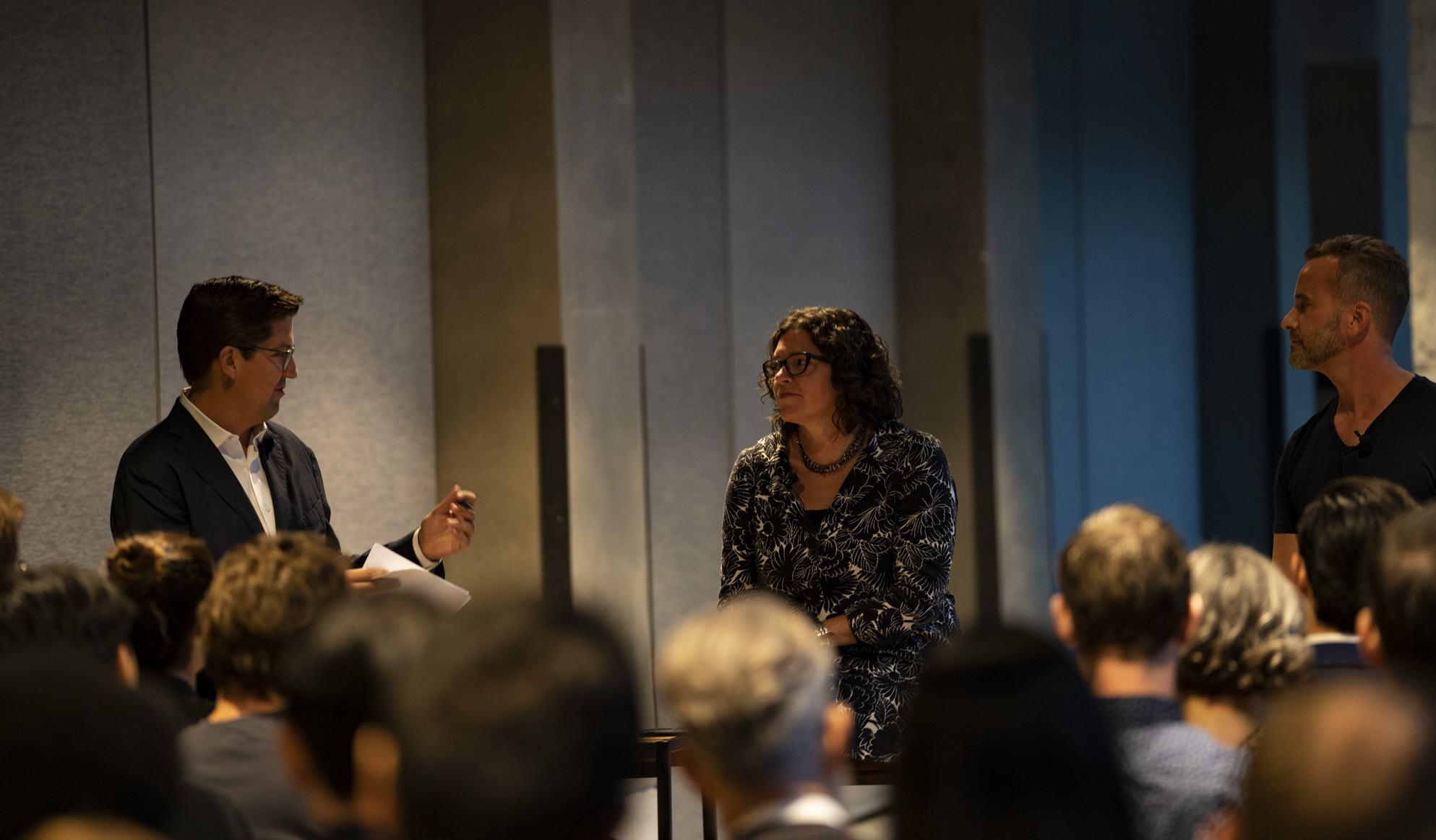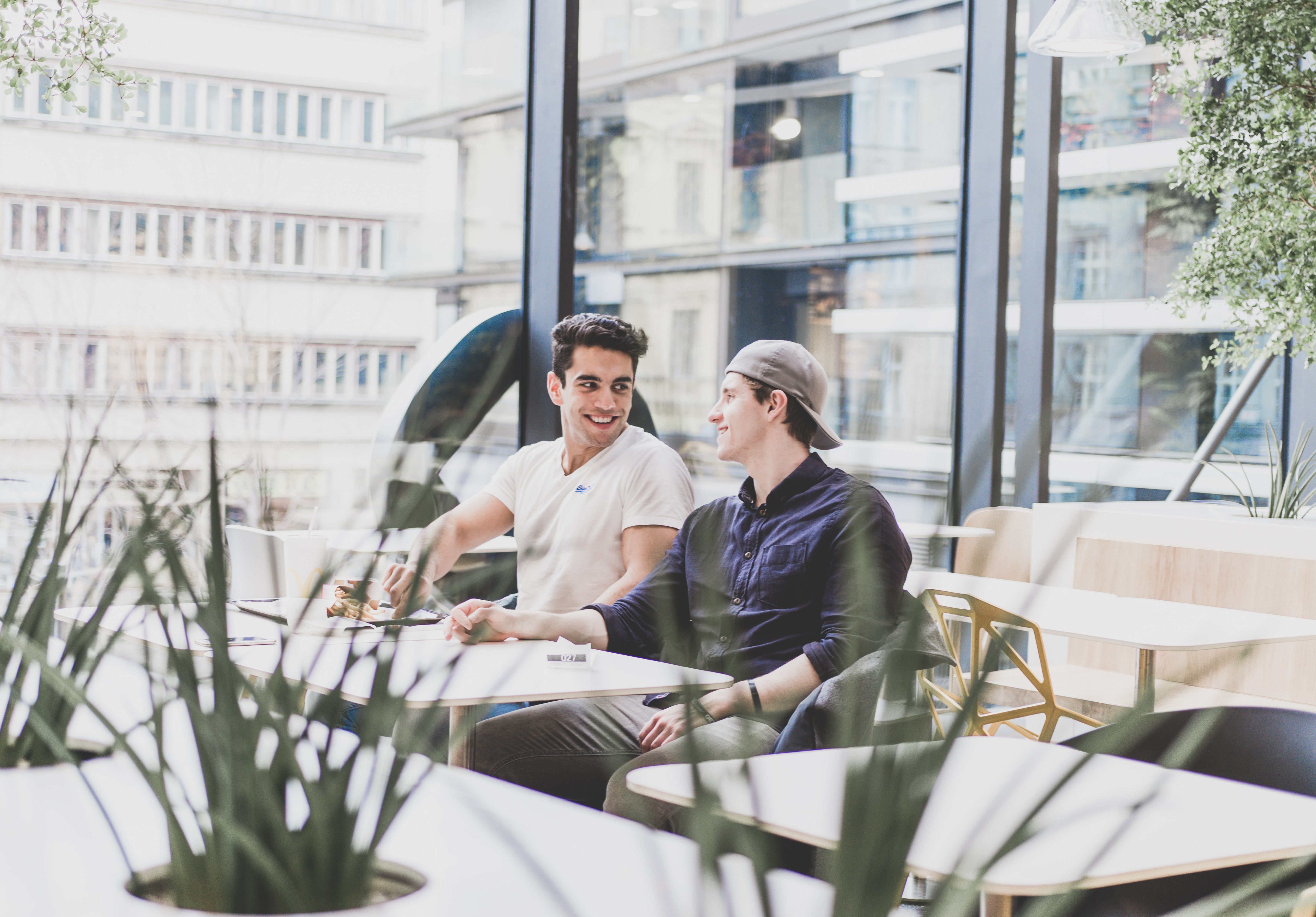The modern workplace is always evolving. At ROOM’s inaugural speaker series, leading minds in design, architecture and product development came together to discuss the future of work.
The perfect workspace is like a unicorn: It’s an ideal we’ve yet to discover in reality. Though we have decades of technological advances in our professional toolboxes, and though corporations have collectively spent billions of dollars to research the most productive work environment solutions, we’ve yet to determine a codified archetype that achieves office-space perfection.
But that doesn’t mean that some of design’s greatest minds aren’t hard at work to solve the problem. To answer the enduring dilemma of building the long-pursued “work environment for all,” ROOM assembled a panel of experts at the 1 Hotel Brooklyn Bridge who are innovating the physical office structure for the betterment of businesses—and more importantly, individuals.
Moderated by Spencer Bailey—founder of the media company The Slowdown and co-host of the Time Sensitive podcast—the conversation featured designer, inventor, and creative director Joe Doucet, along with Melissa Marsh, founder and executive director of the workplace consultancy PLASTARC. Here, we explore the future of the working environment through the eyes of the people who are creating it.
Wellness is a basic right
As wellness becomes more and more ingrained into every aspect of our lives, the intersection of healthy practices and the workplace has never been greater. According to Doucet, wellness in the office shouldn’t be a perk—it should be a given. “Wellness is not an activity—it’s central to who we are and what we can bring to the workplace,” he says. “It’s not something that companies [should] engage in to make productivity better for their employees. It needs to be far more endemic.”
Wellness in the office starts with the basics: fresh air, natural light, and ergonomic workspaces that don’t cause physical harm to our bodies over time. However simple these requirements, they are often overlooked—and can have a lasting impact. “Ergonomics is kind of like global warming,” Marsh says. “It happens so slowly, and we don’t even notice until it hurts.” Dedicated outdoor spaces such as rooftops or gardens, and office layouts that ensure every employee has access to natural light no matter where they do their work can also have drastic impacts on the collective wellness of businesses.
The WeWork effect
The rise of coworking spaces such as WeWork—which emphasizes lifestyle and community in ways that most traditional offices do not—has resulted in what Doucet calls a “Darwinian challenge” that’s impacting the standardized office design of the last several decades. As coworking spaces evolve into more and more hospitable environments, mirroring the welcoming aesthetic and vibe of hotels and restaurants, companies face the dilemma of appealing to their own employees with more comfortable and flexible work environments.
That doesn’t mean every office should have beer on tap and a ping-pong table, but it does mean that businesses should operate as if their success relies on their employees wanting to be in the office—because it does. “In this time of attention economy, the proof is in the pudding that if people are there, it’s a good space, and if people aren’t there, it’s not,” says Marsh. “So if you’re a company and you’re noticing that there’s nobody in the office, maybe it’s not a desirable environment.”
The office as a city
An office supports its employees best when it operates as a mini city, with neighborhoods that satisfy the changing needs of individuals, Doucet says. “In a work environment, there are things you need to do that require your undivided attention—but deep focus all the time is not very healthy,” he explains. Alternatively, open-floor plans, which fuel collaboration, can be prohibitive to certain types of business that require more of that deep focus.
A hybrid plan creates the best of both worlds, allowing employees to move throughout their day to different locations based on their tasks and correspondent needs. “If you think about an urban environment, it’s less about my space and your space, and more about what I’m doing and what you’re doing,” Doucet says. Workspaces that offer diverse environments allow employees to collaborate when they need to collaborate, focus when they need to focus, and retreat when they need privacy.
Office empowerment
Office empowerment is the new buzz term that’s reshaping the work space—and for good reason. It’s all about giving individuals control in deciding what environment works best for their goals. “Autonomy is a basic principle, and I think we’ve underestimated its power in the workplace for an incredibly long time,” Marsh says.
Marsh sites research that shows that if people grasp their tasks and have the tools they need to perform them, they are most productive when they have the power to choose the environment in which they do it. Conversely, prescribing an environment for work is a hurdle to productivity. “The idea that you would walk into a company and that company would say ‘here is your desk—sit down’ is kind of absurd,” she explains. “It misunderstands the environment that will make people powerful and in control of their own destiny, even within a larger corporate structure.”
Choice, therefore, is the answer. Offices that feature diverse work spaces—from outdoor areas and cafes to libraries and office phone booths—allow employees to choose the atmospheres that support their greatest output potential.
Get people moving
“If you are physically more active, your brain is more engaged,” Marsh says. It’s the silver bullet that solves nearly every hurdle in the modern workspace: Offices that encourage movement from one space to another keep employees’ brains stimulated in more ways than one, increasing engagement among team members, inspiring divergent thinking, and promoting problem-solving.
To inspire employees to get up and get going, workspaces need to be not only functionally diverse but also visually diverse; an office with a standardized look from room to room and space to space leads to stagnant thinking—and rarely has the desired effect of encouraging mobility. But dynamic spaces that vary in layout, design, and aesthetic can get people thinking in entirely new ways. “We are migratory creatures,” Marsh says, “so we both understand space differently and perceive information differently when we’re moving.”
Interested in joining a future Workspace of Tomorrow event? Follow ROOM @madebyroom for upcoming events and announcements.


